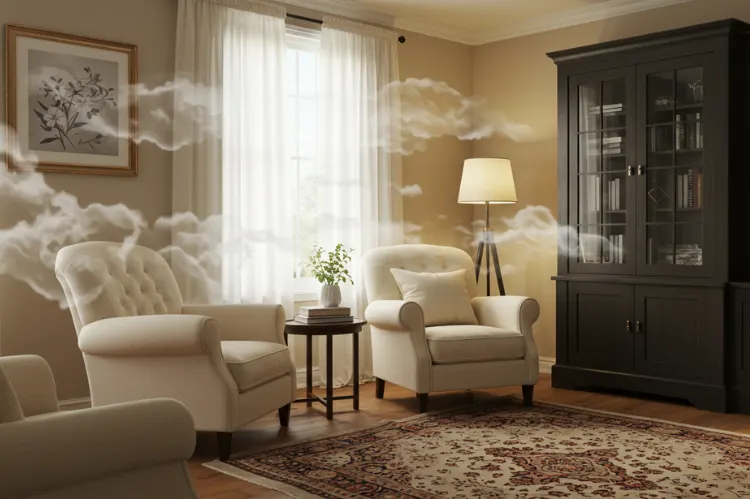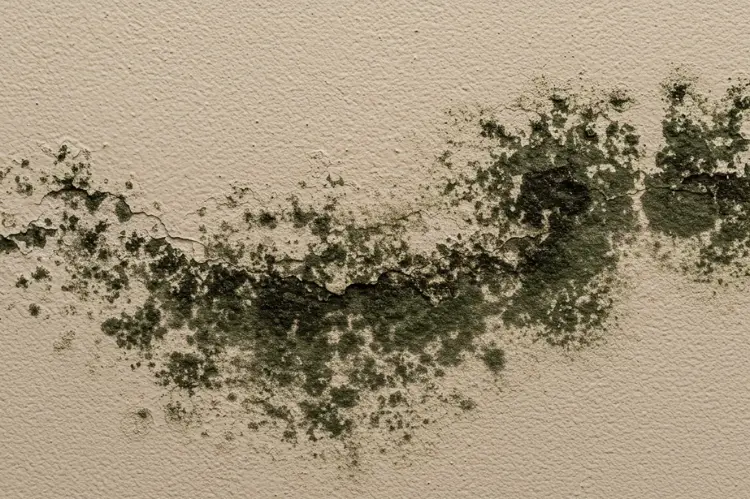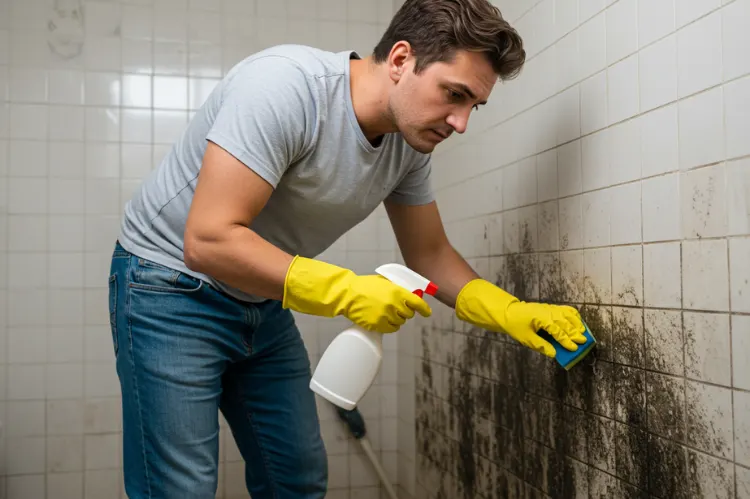Mold is a hidden intruder that dwells in corners and moist areas in the house. It grows quicker than most realize, in a humid climate like Singapore. Although it might appear harmless, mold poses significant health hazards and deteriorates the property in the long run.
As such, detecting the symptoms and taking immediate action is essential. This blog discusses five evident indicators of the presence of mold and five simple ways to eliminate it. Every point indicates how to identify and solve mold issues. Most importantly, an early intervention promotes a healthy and safe home.
5 Signs of Mold in Your Home
1. Musty Odours Around Rooms

A strong musty odor is among the early signs of mold. It drifts into bedrooms, bathrooms, or kitchens. Hence, mold is usually the problem when regular cleaning does not eliminate it. Consequently, the effect is that families breathe in low-quality air every day. Besides, invisible colonies can extend behind the walls or the roof.
A resultant smelling attitude would further enable the growth of mold. Most importantly, it is possible to identify this odour early to facilitate the detection of unseen infestations. That is, in other words, musty odors bring mold. And in such cases, professional mold remediation services may be required to ensure complete removal and prevent recurrence.
2. Visible Stains and Spots

Mold takes the form of black, green, or white patches. These stains are created on either tiles, wood furniture, or walls. As such, unexpected stains should recur even after cleaning, indicating that there is mold. Consequently, these visible patches creep over the surfaces slowly. In addition, dampness is aggravated by continuous wetness.
As a result, paint begins to flake off, and the walls lose strength. Most importantly, banned spots lessen the attractiveness and security of a home. That is, the presence of stains will always show that there is growing mold in the air. Frequent inspection prevents their further progress.
3. Frequent Allergy Symptoms

The spores of mold cause severe allergies in most individuals. It is common in children as they develop signs earlier due to low immunity. Thus, allergies accompanied by sneezing, an itchy eye, or a cough with no specific cause can indicate mold. Due to this, the symptoms tend to deteriorate in the home.
In addition, damp places increase the frequency of asthma attacks. As a result, the number of medical visits rises, which causes families to be stressed out. Most importantly, one should not disregard frequent allergy attacks. Put differently, mold is the unknown cause of health problems.
4. Damp or Humid Surfaces

Mold grows on wet surfaces. This usually is first seen in bathrooms, kitchens, and basements. Thus, condensation on walls or windows is usually an indicator of seldom-seen growth. Consequently, there is mold growth in these damp corners.
In addition, there are instances when the environment becomes drier due to air-conditioning systems. Therefore, the dampness provides rooms in which colonies can spread. Most importantly, wet walls or furniture ought to be a red flag. That is, leaks and wetness are obvious signs of mold. Keeping moisture away prevents infestations.
5. Discoloration on Walls and Ceilings

Mold also tends to discolour the walls, ceilings, or fabrics. Yellow, brown, or dark spots occur and extend. Thus, when spots persist even after cleaning, they become full of mold. Consequently, such patches have impacts on beauty as well as home safety.
Besides, when they are untreated, they undermine structures. In turn, the price of property decreases with time. Most importantly, discoloured regions are an indication of concealed colonies that are in dire need of attention. That is to say, switching colours is a good visual indicator of mould infestation.
5 Solutions to Keep Homes Mold-Free
1. Improve Ventilation Indoors

Ventilation also alleviates the humidity issue, which keeps the homes non-moldy. Consequently, opening windows regularly allows air to circulate indoors. This leaves dry corners within a short time, and they become safe. In addition, the exhaust fans in the kitchen or bathrooms help eliminate moisture quickly.
As a result, fewer places are available to grow mold spores. Most importantly, fresh air maintains good health in indoor spaces. More specifically, it means better ventilation is among the most straightforward solutions to mold. Frequent passing of air prevents recurring infestation and is safe for families.
2. Fix Leaks and Water Damage

Mold grows best under water leak conditions. Thus, repairs should be immediate to stop leaking pipes, roofs, or taps. Consequently, there is instant improvement in damp patches on walls or floors. In addition, water damage that is not treated causes concealed colonies of mold.
As a result, it costs more to repair more. Most importantly, early leak repair saves not only money but also health. This is to say that water source repairs are of great importance regarding mold prevention. Plumbing should be periodically checked to ensure the houses are safe and dry.
3. Use Dehumidifiers Regularly

The climatic conditions of Singapore, such as humidity, render dehumidifiers very useful. These appliances dry up too much moisture in the air in homes. Thus, their operation decreases dampness in bedrooms and basements. Consequently, fungi spores find it hard to reproduce inside buildings.
Besides, they enhance the air quality and comfort with the help of dehumidifiers. Therefore, allergic symptoms will go down at least in sensitive residents. Most importantly, these machines will serve as preventive measures against molds in the long-term perspective. Put differently, employing dehumidifiers daily can guarantee healthy and dry living conditions.
4. Clean and Disinfect Affected Areas

Cleaning regularly will stop the spread of mold. Disinfecting with mild chemicals such as vinegar effectively cleans touched areas. Consequently, mold colony sizes are reduced and eliminated gradually. Further, commercial cleaners can effectively deal with bigger infestations.
As a result, spaces that are cleaned are safer longer. Most importantly, moist corners may be disinfected so that spores do not return promptly. That is, regular cleaning practices ensure that molds do not grow in houses. Bathrooms, kitchens, and dark corners are some areas that families need to pay attention to frequently.
5. Schedule Professional Mold Inspections

Professionals use sophisticated tools to detect an invisible colony. Thus, regular inspections are planned so that timely detection is guaranteed. Consequently, families do not have to spend more money on making repairs due to unobservable growth. In addition, specialists may propose individual solutions to prevent in the long term.
Therefore, houses remain secure and sturdy throughout the year. Most importantly, screening makes owners restful. That is, with the assistance of professionals, houses will be moldfree at all times. Preventive measures take care of the health and the value of the property.
Final Words
Mold can be initially unseen, but its impact is damaging and expensive. Early identification of the signs helps avoid any destruction of property and health. Stains, allergies, and musty odours are warning signs to take seriously. Basic ventilation, a dehumidifier, and frequent cleaning will help contain mold.
Besides, work-related checks prevent the invisible colonies from being overlooked. More than anything, a mold-free residence is safe, comfortable, and relaxing. This is to say, prevention is always the best medicine compared to the costly remedies. Therefore, take action now and make your home mold-free.
Read Next: Mold in Home: Early Signs, Health Risks, and Prevention Tips

